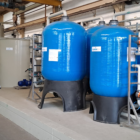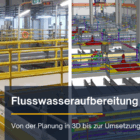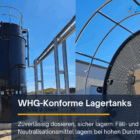The retention time is a key parameter in industrial water and wastewater treatment. It describes the length of time that a medium - for example water or wastewater - remains in a specific treatment process or system. The residence time is decisive for the efficiency of chemical, physical and biological processes, as it directly influences the reaction time, the contact time with active substances or the sedimentation efficiency.
In practice, the retention time is often referred to as hydraulic retention time (HRT) and plays a decisive role in the design of reactors, sedimentation tanks, membrane modules and other technical systems.
Table of contents
Definition and calculation of dwell time
The dwell time t is calculated from the ratio of the volume of a system V to the volume flow Q:
t = V/Q
- tDwell time (in hours, minutes or seconds)
- VVolume of the reactor, tank or system (in cubic meters, m3)
- Q: Volume flow of the medium (in cubic meters per hour, m3/h)
Factors influencing the dwell time:
System design:
- Geometry and size of the reactor or tank.
- Installations such as agitators or lamella packs.
Operating parameters:
- Flow rate and inlet conditions.
- Variability of the wastewater flow or raw water supply.
Process type:
- Chemical reactions, sedimentation or biological degradation processes require different retention times.
Importance of retention time in water and wastewater technology
1. chemical processes
Precipitation and flocculation (CP systems)
The retention time is of central importance in chemical precipitation and subsequent flocculation in CP systems. Both processes serve to convert dissolved or colloidal pollutants into solid particles, which can then be removed by sedimentation or filtration.
Formation and stability of flocs:
Chemical precipitation, for example of heavy metals or phosphates, requires sufficient contact time with the precipitants (e.g. iron or aluminum salts) to form insoluble compounds. Subsequently, flocculantscause the particles formed to aggregate into larger flocs that can easily sediment.- If the retention time is too short: floc formation remains incomplete, which reduces sedimentation efficiency and results in a cloudy effluent.
Optimum mixing:
Even distribution of the chemicals in the reactor is essential. Agitators and static mixers ensure that the precipitants and flocculants have sufficient time to take effect.
Neutralization
Neutralization is used to adjust the pH value to a specific range that is required for subsequent processes such as precipitation, biological degradation processes or discharge into the public sewer system.
Contact time with acids or bases:
In order to adjust the pH value of the medium evenly, the acid or base must have sufficient time to mix completely with the water or waste water.Influence of residence time on reaction uniformity:
- Excessively short retention times lead to pH fluctuations, which can impair subsequent processes.
- A longer dwell time allows a uniform pH distribution and prevents local overdosing of chemicals.

Photo: Our CP system ALMA CHEM MCW for the removal of heavy metals, AOX, hydrocarbons and cyanide
2. physical processes
Sedimentation
Sedimentation is a physical process in which solids are removed from the liquid by gravity. It is carried out in sedimentation tanks, lamella clarifiers or sedimentation tanks.
Particle size and settling velocity:
The dwell time must be sufficient so that particles with different settling velocities have time to settle to the bottom of the tank.- Fine particles require a longer dwell time as their sinking speed is lower.
- Lamella clarifiers can increase the effective retention time by increasing the sedimentation area.
If the retention time is too short:
The suspended solids remain in the water and increase the turbidity of the effluent, which requires additional treatment.
UV treatment
The dwell time plays an important role in UV treatment, which is often used to disinfect water.
Contact time with UV radiation:
Microorganisms such as bacteria, viruses and parasites are inactivated by exposure to UV light. The dwell time in the UV chamber is crucial to ensure a sufficient dose of UV radiation.Influence of the dwell time:
- If the dwell time is too short, the radiation dose remains insufficient, which prevents complete disinfection.
- Optimum retention times ensure complete inactivation of pathogenic organisms and high water quality.
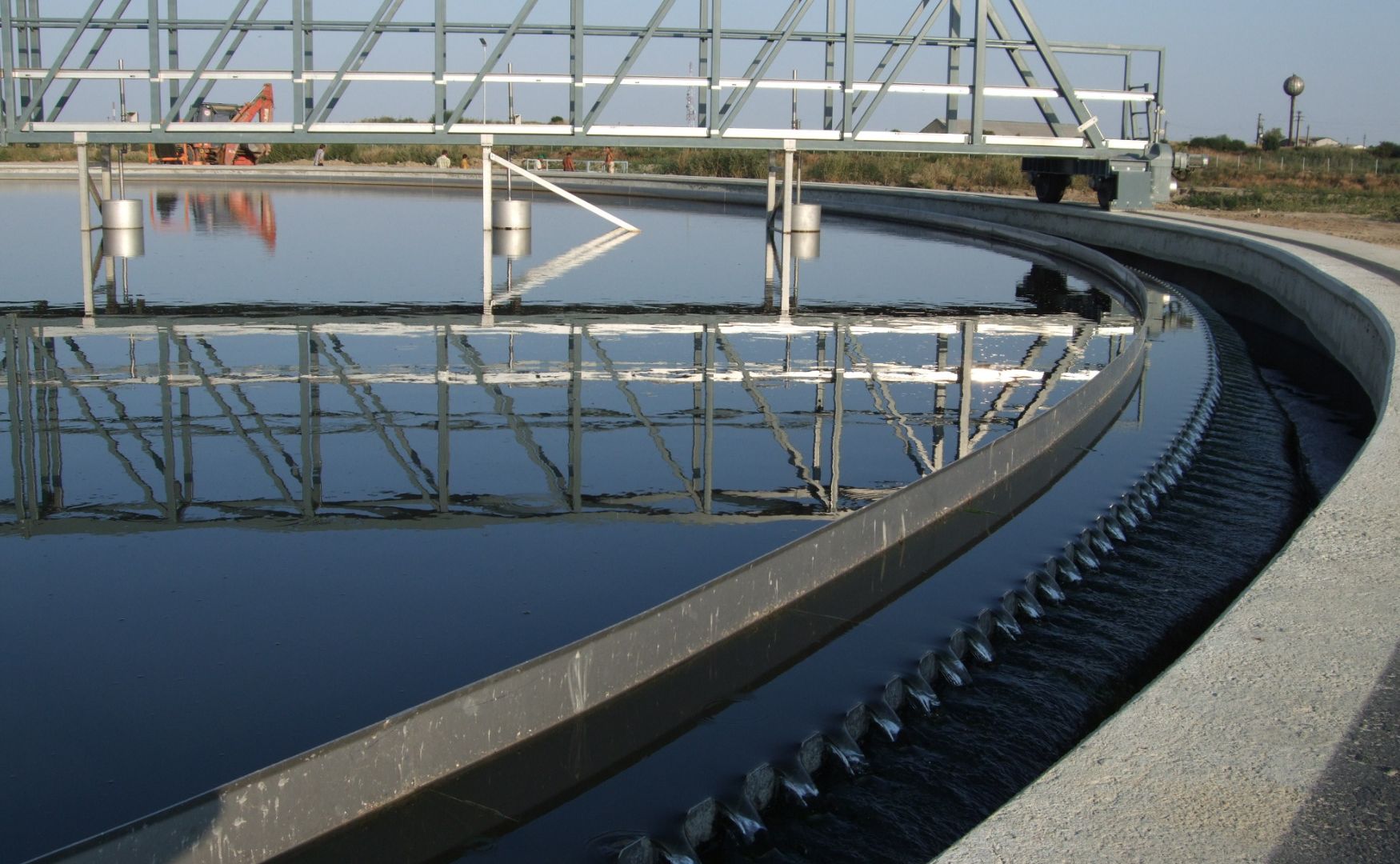
Photo: Our sedimentation tank with circular scraper and return of the biomass to the anaerobic treatment stage (process: ALMA BHU GMR)
3. biological processes
Activated sludge process
The activated sludge process is an aerobic process in which microorganisms break down organic substances. The retention time is a key factor for the degradation performance and the stability of the system.
Contact time between microorganisms and substrates:
The residence time determines how long the microorganisms have to break down organic substances.If the retention time is too short:
Organic substances are not completely degraded, which leads to increased COD and BOD loads in the effluent.Optimization of retention time:
Careful design of the aeration tank ensures that the decomposition of organic loads takes place efficiently and that energy is saved for aeration at the same time.
Anaerobic reactors
In anaerobic treatment processes, such as UASB systems (Upflow Anaerobic Sludge Blanket), organic material is broken down to methane and carbon dioxide in the absence of oxygen. The retention time is decisive for the efficiency of this process.
Methane production:
The microorganisms require a certain retention time to completely break down organic substances and produce methane.If the retention time is insufficient:
Organic substances remain in the wastewater and the methane yield decreases, which reduces the energy efficiency of the system.
Biofiltration
Biofiltration is another biological process that uses the retention time to break down organic substances and remove pollutants.
How it works:
In biofiltration systems, microorganisms are colonized on a carrier material through which the water flows. The retention time determines how long the water remains in contact with the microorganisms.Influence of the dwell time:
- A longer retention time enables the complete decomposition of organic substances and the removal of pollutants such as ammonium or nitrates.
- Too short dwell times lead to insufficient cleaning performance.
Advantages of biofiltration:
Due to the high density of microorganisms and the compact design, biofiltration systems can work efficiently even where space is limited.
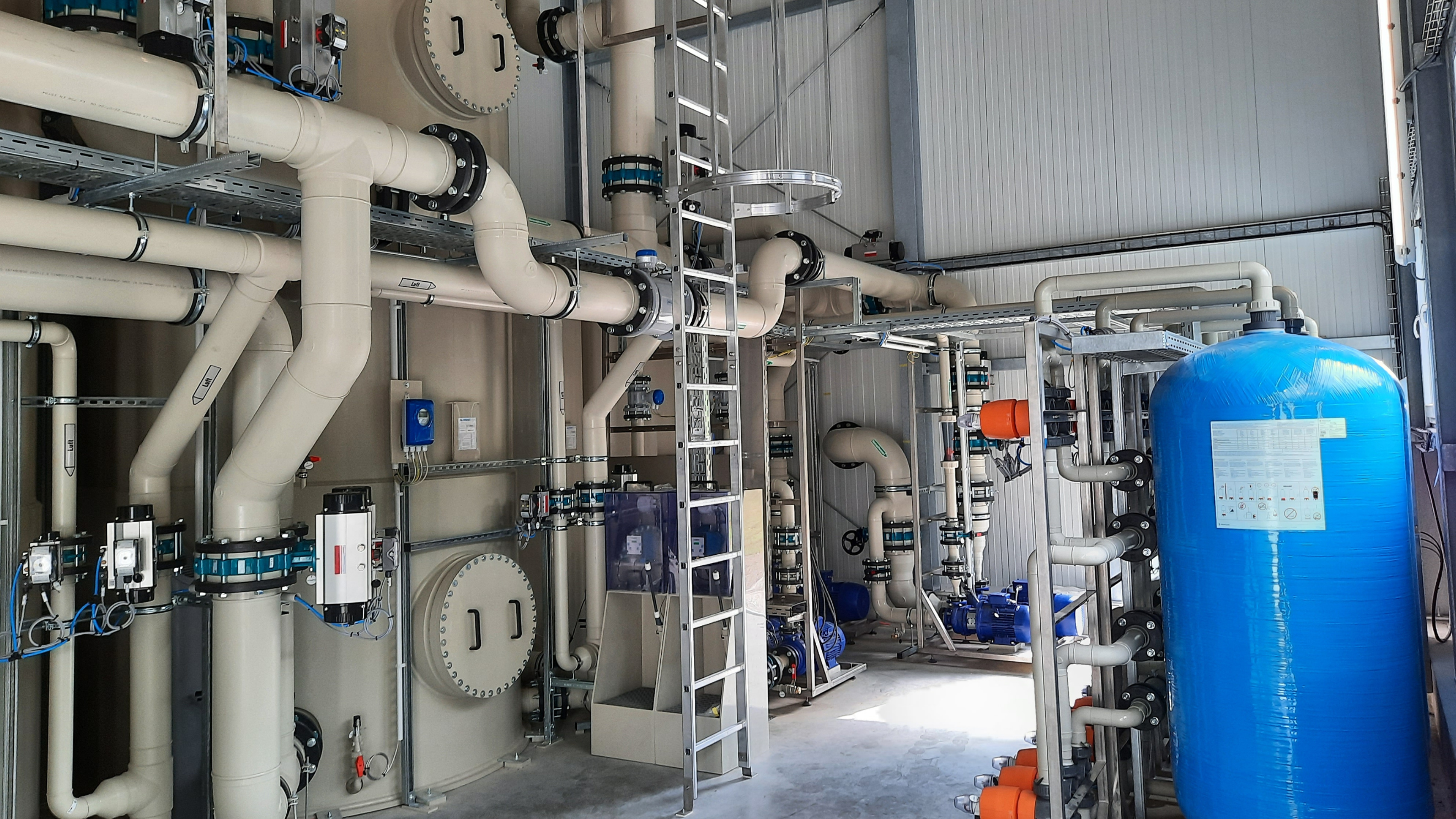
Photo: Our ALMA BHU BioFil biofiltration system for removing residual organic contamination before treatment in reverse osmosis systems (WaterReUse)
Optimization of the dwell time
An optimally set dwell time ensures the efficiency and cost-effectiveness of the treatment process. Please note
Hydraulics and flow conditions:
- Avoidance of dead spaces or short-circuit flows, which can reduce the effective dwell time.
Plant size and capacity:
- The dimensioning of reactors or tanks must be adapted to the expected volume flows.
Automation and monitoring:
- Sensor technology and process control enable continuous adjustment of the dwell time to fluctuating feed conditions.
Process combinations:
- The combination of physical, chemical and biological processes can reduce the dwell time required in individual process stages.
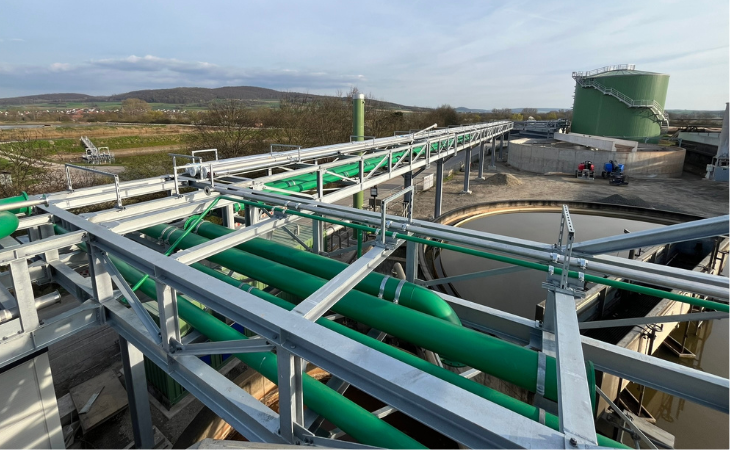
Photo: Our ALMA BHU GMR anaerobic biogas plant for generating energy from wastewater
Challenges
Varying inlet conditions:
- Fluctuating volume flows or concentrations can strongly influence the effective residence time.
Insufficient dimensioning:
- An incorrect design leads to overloading of the system or inefficient operation.
Short-circuit currents:
- Unfavorable flow patterns can shorten the actual dwell time.
Conclusion
The retention time is a fundamental parameter in water and wastewater treatment that determines the efficiency and effectiveness of a process. From CP plants to biological treatment systems, the optimal dimensioning and control of the retention time plays a central role in complying with legal requirements and economical operation.
With modern sensor technology, careful planning and regular process optimization, companies can ensure that their systems maintain the required retention time and guarantee reliable and sustainable water and wastewater treatment.
For further information on our products, please feel free to contact us at any time!


